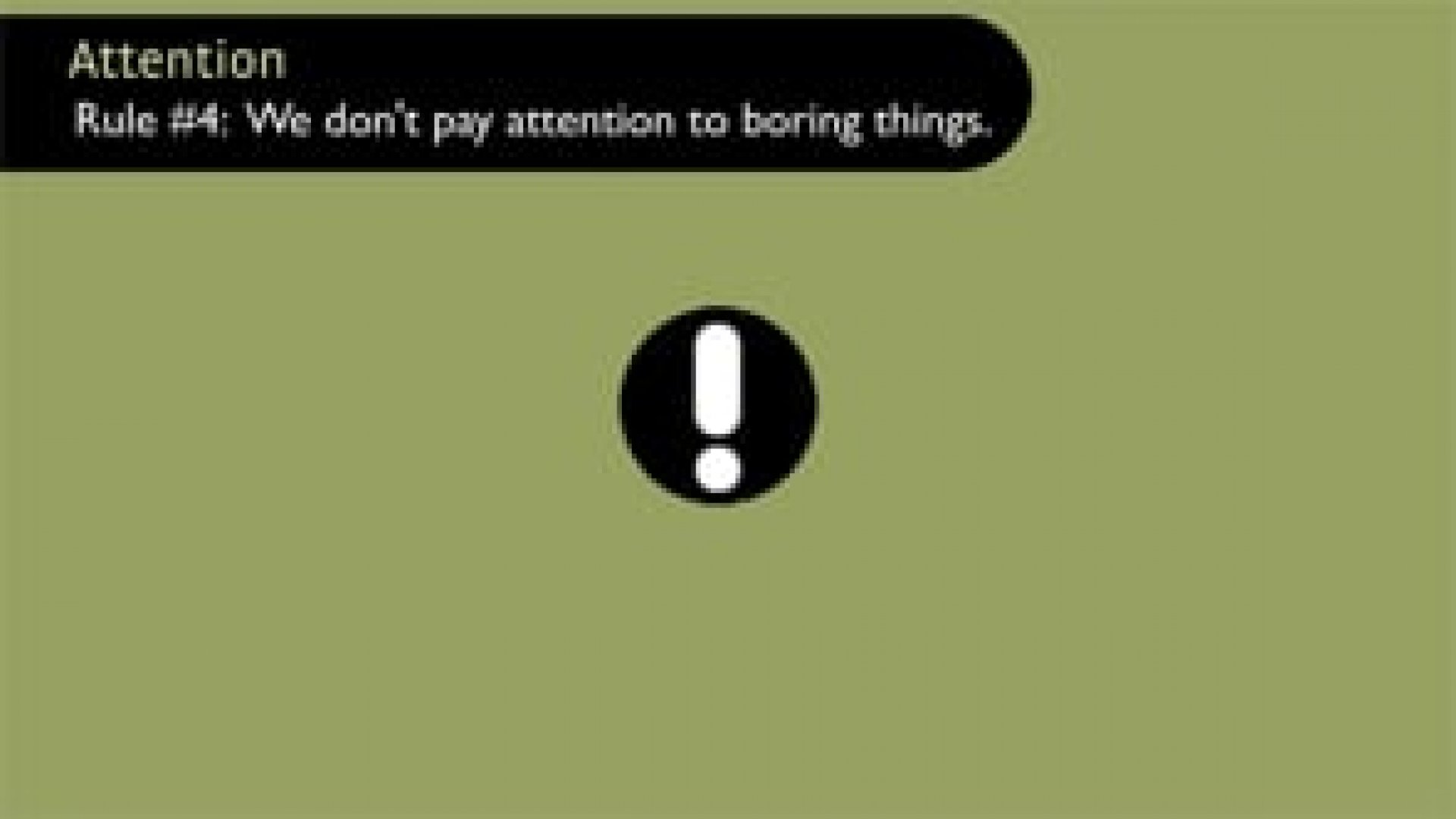Attention
Attention
Reference
John Medina, Brain Rules
The more attention the brain pays to an event, the more complex the way in which it stores the information. So, the more attention we pay, the more and better we learn.
But how does attention work? How can you keep the attention of the people you train?
First, keep in mind John’s Medina Rule #4 in his book Brain Rules: We don't pay attention to boring things. As trainers, we need to keep things lively and engaging for our participants and steer clear of anything boredom inducing.
Medina also structures lectures and experiences based on his ten-minute rule: your audience will checkout after ten minutes if there is no change in what you are doing. This means that you need to work to grab your audience’s attention over and over again.
How to catch and keep attention?
Create events rich in emotion
Emotions catch our attention and emotional arousal helps the brain learn (through the release of dopamine, which functions as a “do not forget this” post-it note reminder)
Meaning before details
Participants cannot grasp details if they don’t first understand the meaning. You can ensure meaning comprehension by organizing information logically and in a way that allows people to associate clusters and extract main ideas. Don’t get lost in the details. Make sure the red line of meaning is always visible and come back to it several times to ensure people really get it.
Create narratives
Humans are storytellers. Stories catch our attention more than dry facts and information. This means that even if you present facts, you should communicate them or link them to a story.
Implications for training
If you have to use presentations or inputs, divide them into ten-minute sections, especially when you need to introduce new concepts.
Use John Medina’s model: introduce the plan of the presentation/ input at the beginning. Then use each ten-minute section to present just one general concept. You should use the first minute to introduce the first the main idea, and the other nine minutes to explain the details. Don’t forget to always link the details to the general concept. Go back to the general plan of the presentation often to make sure your participants understand exactly where they are and how what you are talking about relates to and is meaningful in the bigger picture.
Make sure you don’t lose your participants’ attention. Use emotional hooks at the beginning of every ten-minute slot to help your audience anticipate what is coming and create curiosity about it. Remember that after nine minutes and fifty-nine seconds your audience needs something new to occur. They need something to trigger a reaction toward the speaker thus stimulating their brain. An efficient way to create this reaction is to trigger emotion through: a personal story, an anecdote, a creative or unexpected use of words, a shared narrative, or a meaningful question. Make sure, however, that the trigger is appropriate and meaningful for the specific group you are addressing (i.e. know the profile of your group beforehand).
Food for thought!
